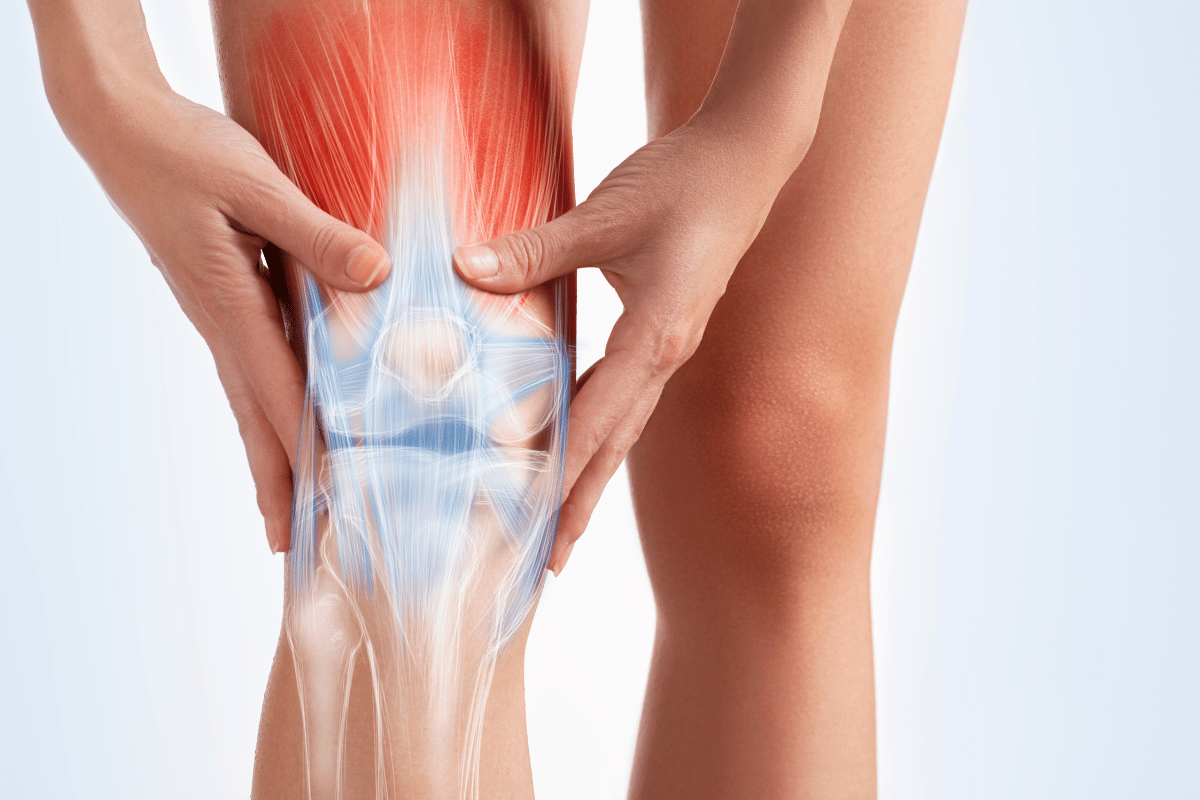Understanding Your Knee Pain: A Guide With Knee Pain Location Chart

The knee joint is a complex structure that bears significant weight and facilitates a wide range of movements. Unfortunately, this complexity also makes it susceptible to various injuries and conditions that can cause pain. Knee pain can be a debilitating issue, hindering your mobility and overall well-being. If you’re experiencing knee pain, identifying its location is the first step towards understanding the potential cause and seeking appropriate treatment. A knee pain location chart can be a valuable tool in this process.
Table of Contents
ToggleKnee Pain Location Chart: Decoding Your Discomfort
A knee pain location chart divides the knee into specific regions, each corresponding to underlying anatomical structures and potential sources of pain. Here’s a breakdown of common knee pain locations and their possible causes:
Front of The Knee
Pain Above The Kneecap
This area houses the quadriceps tendon, which connects the quadriceps muscles in the thigh to the kneecap. Pain here could indicate quadriceps tendinitis, an overuse injury common in athletes. Arthritis or bursitis, inflammation of fluid-filled sacs around the joint, can also cause pain in this region.
Pain Under The Kneecap (Patella)
This could be patellar tendinitis, also known as jumper’s knee, due to inflammation of the tendon connecting the kneecap to the shinbone. Patellofemoral pain syndrome (PFPS), often referred to as runner’s knee, causes pain around or behind the kneecap due to improper tracking of the kneecap in the joint groove.
Inner Knee
Pain on The Inner Side of The Knee
The medial collateral ligament (MCL) stabilizes the knee on the inner side. Pain here, often accompanied by swelling and tenderness, suggests an MCL sprain or tear, typically caused by a forceful inward force on the knee.
Inner Knee Pain With a Popping Sensation
This could indicate a medial meniscus tear. The meniscus are C-shaped cartilage structures that act as shock absorbers within the knee joint. A tear can occur due to twisting or forceful movements.
Outer Knee
Pain on The Outer Side of The Knee
The lateral collateral ligament (LCL) stabilizes the knee on the outer side. Pain and tenderness in this area, along with instability, could be an LCL sprain or tear, often caused by an outward force on the knee.
Outer Knee Pain With a Clicking Sensation
This might indicate a lateral meniscus tear, which can occur during activities that put a twisting strain on the knee.
Behind The Knee
Pain at The Back of The Knee
The posterior cruciate ligament (PCL) prevents the shinbone from moving backward excessively. Pain in this region, especially after a direct blow to the knee, could be a PCL tear.
Pain Behind The Knee With a Bulging Mass
This might be a Baker’s cyst, a fluid-filled sac that develops behind the knee due to conditions like arthritis or meniscus tears.
Top of The Knee
Pain at The Top of The Knee
This area houses the bursae, fluid-filled sacs that cushion the joint. Bursitis, inflammation of these bursae, can cause pain and swelling in this region.
Inside The Knee
General Knee Pain
This could indicate various conditions, including osteoarthritis, a degenerative joint disease that causes cartilage breakdown, or loose bodies within the joint caused by cartilage or bone fragments.
Knee Pain Location Chart: A Disclaimer
While a knee pain location chart can offer valuable insights, it’s important to remember that it’s not a definitive diagnostic tool. The same location might be associated with different underlying causes. Additionally, pain can sometimes radiate from one area to another, making it challenging to pinpoint the exact source…. For more visit The London Wire
Consulting a Healthcare Professional
If you’re experiencing knee pain, regardless of location, it’s crucial to consult a healthcare professional for a proper diagnosis and treatment plan. They will conduct a physical examination, inquire about your medical history and symptoms, and might recommend imaging tests like X-rays or MRIs for a more detailed evaluation. Early diagnosis and treatment are essential for optimal recovery and preventing long-term complications.
Conclusion
Knee pain can be disruptive, but by understanding the different areas where it can manifest and utilizing a knee pain location chart as a reference, you can gain valuable insight into potential causes. Remember, this chart is a starting point, and consulting a healthcare professional is vital for an accurate diagnosis and effective treatment plan. With proper care, you can manage your knee pain and get back to enjoying an active life.
Published by Amanda Mills
Amanda Mills is a seasoned digital marketer and accomplished content writer, known for her dynamic approach to creating engaging and impactful digital content. With over a decade of experience in the industry. View more posts
Recent Post
Letflix: A New Age of Streaming Entertainment







